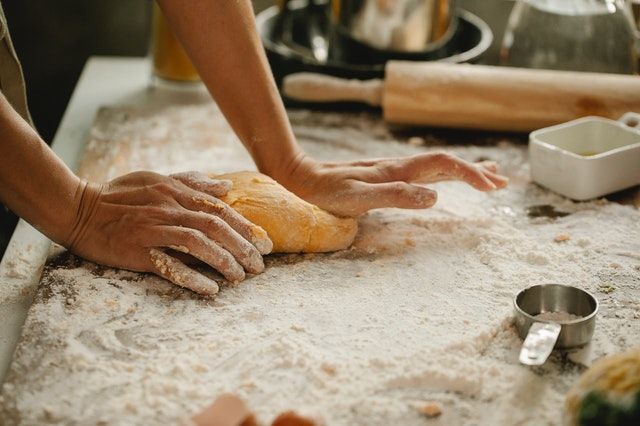Introduction

Boris Dunand www.unsplash.com
The trend of “pop-up” restaurants seems ubiquitous these days, with chefs all over the country (and, in fact, all over the world) choosing to set up temporary shops in food trucks or kiosks. On its face, the “pop-up” model appears to be a low-maintenance and low-cost way for a creative cook to share their talents with the public minus the expense and difficulty of opening their own brick-and-mortar space.
However, the typical pop-up restaurant isn’t quite as simple to operate as outside observers imagine … and as more and more pop-up chefs opt for short-term stays in already fully functional restaurant kitchens, the concept starts to lose its mega-portable, always-on-the-move, can-happen-anywhere sense of fun and spontaneity. Lots of things need to be taken into consideration. The professional kitchen that chefs need to prepare their food has to have as well as all the facilities in order to meet the needs of the chef there is a very strong element of food and hygience that eveyone operating the kitchen need to adhere to.
Task

Klaus Nielsel www.unsplash.com
The kitchen is command central of any food places, the place where food gets ordered, prepped, cooked, and plated before being served to customers. Whether it's spacious or tiny, if a restaurant kitchen is carefully designed, its staff can consistently deliver hundreds of meals throughout the day.
Restaurant kitchens are made up of various stations, each dedicated to a particular task. There may be a prep station, a sauté station, a pizza station, and a salad station.
Consider your restaurant menu when planning your kitchen. Do you have a variety of salads? A salad station is needed. A lot of grilled food? Plan on a large grill and give it its own station.
Space is an important consideration. It takes some smart organization to deliver a large menu from a tiny kitchen, but it can be done.
Once you have planned your restaurant kitchen, you need to outfit it with the right commercial equipment. If you're on a tight budget, look for used equipment. You can pick up the large equipment and even restaurant dishes, serving utensils, and other small items for pennies on the dollar. You might also consider the leasing restaurant equipment, such as ice makers.
Before you open for business, make a plan for keeping the kitchen clean. You'll need daily, weekly, monthly, and yearly kitchen cleaning lists that outline everything from wiping down prep stations to cleaning grease traps.
As a chef it is your role to create a checklist to go through all the checks you need to do on a daily basis to ensure you are adhering to strict food and hygiene standards.
Process
Compared to other workspaces, managing health and safety in the food and catering industry has its own unique challenges. If a food outlet regardless of its size fails to follow proper health and safety regulations in the kitchen environment, potential injuries could occur as well as damaging legal action - or worse.
To ensure you deliver on the correct health and safety regulations, you must consider the safety of your staff and your customers. In the Resources section look through all the links we have provided these will give you a comprehensive list of things you need to do to ensure you follow the health and safety guidelines. In the document section you will find a commercial kitchen health and safety inspection checklist to make sure you conduct all the right checks in your restaurant using this checklist as the basis for your checks.
Conclusion
It's a dream for many people to run a food business from their own kitchen. Having your own business has a lot of perks, including greater flexibility and the chance to be your own boss.
However, it's important to remember that the same food hygiene rules apply to small professional kitchen as they do to larger food businesses. Whether it's a global restaurant chain or a pop up cupcake business, health and safety inspections will still be required on a regular basis to ensure the prioritisation of food hygiene and safety in the kitchen, guaranteeing that all food prepared for consumption is safe.
If basic kitchen hygiene rules are being followed at all times, health and safety inspections should not be a cause for concern, but more a routine formality.
Learning Outcomes
- 1.15) I can apply ethical thinking to consumption and production processes.
- 2.2) I can judge my strengths and weaknesses and those of others in relation to opportunities for creating value.
- 2.6) I can set challenges to motivate myself.
- 2.20) I can communicate imaginative design solutions.
- 3.6) I can develop a business model for my idea.
- 3.12) I can critically evaluate the risks associated with an idea that creates value, taking into account a variety of factors.






Resources
Links
Complete Health & Safety Checklist for Commercial Kitchens
https://blog.sfceurope.com/complete-health-safety-checklist-for-commercial-kitchens
The health and safety checklist for restaurants and food outlets
https://www.hse-network.com/the-health-and-safety-checklist-for-restaurants-and-food-outlets/
